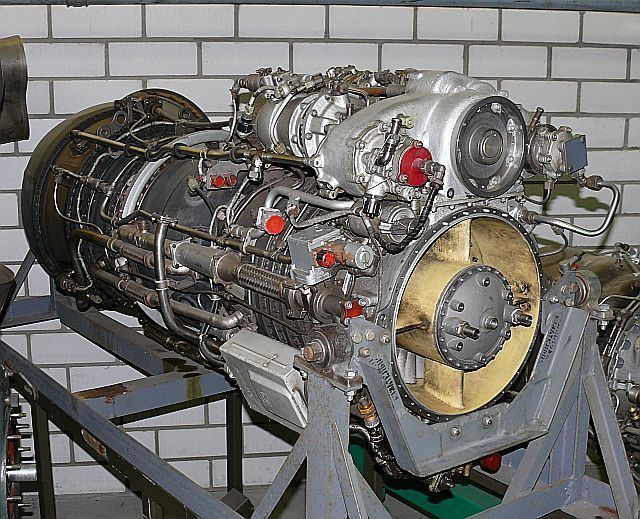 | ||
The accessory drive is a gearbox that forms part of a gas turbine engine. Although not part of the engine's core, it drives the accessories, fuel pumps etc., that are otherwise essential for the operation of the engine or the aircraft on which it is mounted. Accessory drives on large engines handle between 400–500 hp.
Contents
Power for the accessory drive is taken from the central shaft linking the turbine and compressor sections of the engine. This requires an internal gearbox that couples the drive to a radial driveshaft or towershaft that drives an external gearbox.
Internal gearbox
The design of the internal gearbox is complicated by the heat and small space available in which to connect the driveshaft. It is usually placed between the compressor outlet and the combustor. In turboprops or designs with centrifugal compressors, it may be placed ahead of the compressor.
For two-shaft designs, an accessory drive will be taken from the high-pressure shaft, i.e. the outer and shorter of the two concentric shafts. This shaft comes up to speed more quickly when the engine is started. The drive and accessory gearboxes may also be split in two, one driven from each engine shaft, so as to distribute their loads. The engine-critical systems, including the starter drive, are arranged on the high-pressure shaft, with aircraft systems on the low-pressure shaft. The high-pressure shaft also rotates faster than the low-pressure shaft, which may influence the distribution of accessories.
To allow for thermal expansion, the drive from the main shaft may be taken by one of three means:
Radial driveshaft
To make best use of the limited space for the driveshaft and internal gearbox, the driveshaft runs at high speed, thus allowing it to be of small diameter. This reduces the disruption to the airflow and the size of the hollow fairing that encloses it.
If it is not possible to arrange a single straight path for the driveshaft, it may be arranged in two sections and linked by an intermediate gearbox. This is most commonly required for high-bypass turbofans with large diameter fans.
Bleed air
In some engines, bleed air is also tapped to provide power for accessories, as well as a mechanical shaft drive. Bleed air is particularly useful when a source of compressed air is specifically needed, either to pressurise cabin air, or as a supply of cooling air to other components (to avoid excess heat, this is taken for a low-pressure tapping, or from the LP compressor of a two-shaft engine). One important use for bleed air is for cross-starting of other engines in a multi-engine aircraft.
Accessories
Some of the accessories that may be driven include:
Additional facilities are provided for a centrifugal oil breather, to separate the drive lubricating oil from the overboard breather air vent. Also access for hand-turning the engine, during ground maintenance.
